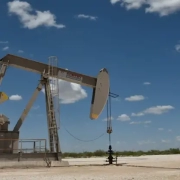⚠️ IMPORTANT LEGAL DISCLAIMER:
The information provided on this page is for general informational purposes only and does not constitute legal, financial, or investment advice. Oil and gas laws, mineral rights regulations, and royalty structures vary significantly by state and jurisdiction. While we strive to provide accurate and up-to-date information, no guarantee is made to that effect, and laws may have changed since publication.
You should consult with a licensed attorney specializing in oil and gas law in your jurisdiction, a qualified financial advisor, or other appropriate professionals before making any decisions based on this material. Neither the author nor the publisher assumes any liability for actions taken in reliance upon the information contained herein.
Oil and gas leases are central to the energy sector, determining how resources are extracted. How revenues are shared between landowners and extraction companies. A critical component of these leases is the royalty clause. This dictates the percentage of production revenues that landowners, or mineral rights holders, will receive. However, market conditions, production costs, and legal regulations can shift dramatically over time. It is making it challenging for fixed royalty rates to remain fair throughout the lifespan of an oil or gas project. This is where royalty adjustment clauses come into play.
Royalty adjustment clauses offer flexibility and adaptability in oil and gas leases. It is allowing royalty payments to be recalibrated based on certain conditions or triggers. These clauses are designed to ensure that both landowners and operators. It maintains a fair financial arrangement, even as external factors change. This article delves into the role of royalty adjustment clauses in oil and gas leases, examining how they work, the types of adjustments that can be made, and their importance in maximizing long-term profitability and sustainability for all parties involved.
Understanding Oil and Gas Royalties
Before diving into royalty adjustment clauses, it’s important to understand how oil and gas royalties work. A royalty is a percentage of revenue generated from the production and sale of oil or gas that is paid to the mineral rights owner. The royalty rate is typically negotiated when the lease agreement is created and is often a fixed percentage, commonly ranging from 12.5% to 25% of production revenue.
The purpose of royalties is to compensate landowners for the extraction of non-renewable resources from their land. However, oil and gas production is subject to market volatility, fluctuating costs, and unforeseen challenges. Fixed royalty agreements may not always be advantageous in the long term, especially if market conditions shift significantly after the lease is signed.
Royalty adjustment clauses provide a solution to this issue by enabling the parties involved to adjust royalty payments based on predefined conditions, allowing for a fairer and more responsive distribution of revenues as circumstances evolve.
What Are Royalty Adjustment Clauses?
Royalty adjustment clauses are provisions within oil and gas leases that allow for changes to royalty payments based on specific factors or triggers. These clauses are typically designed to account for fluctuations in market prices, production levels, or operational costs that may impact the profitability of an oil or gas project.
The key advantage of royalty adjustment clauses is that they provide flexibility and reduce the risk of disputes between landowners and extraction companies. By anticipating potential changes in external factors, these clauses allow both parties to maintain a fair and balanced financial arrangement over the course of the lease.
In many cases, royalty adjustment clauses are negotiated to ensure that landowners receive a higher royalty rate if market prices increase or production levels exceed expectations. Conversely, these clauses can also protect extraction companies from paying excessive royalties in situations where production costs rise significantly or market prices fall.
Common Types of Royalty Adjustment Clauses
There are several different types of royalty adjustment clauses commonly included in oil and gas leases. Each type serves a unique purpose and is designed to address specific risks or uncertainties that may arise during the course of oil or gas production.
Price-Based Adjustment Clauses
One of the most common types of royalty adjustment clauses is a price-based adjustment clause. This type of clause adjusts royalty payments based on changes in the market price of oil or gas. When commodity prices increase, the landowner may receive a higher percentage of the revenue, while a decrease in prices may lower the royalty rate.
Price-based adjustment clauses are particularly important in volatile markets where oil and gas prices fluctuate regularly. By including these clauses in a lease agreement, both landowners and extraction companies can protect themselves from sudden price swings that could dramatically alter the value of the royalty payments.
For instance, if the price of oil rises significantly above a predetermined threshold, the landowner may be entitled to a higher royalty rate to reflect the increased profitability of the project. Similarly, if prices fall below a certain level, the extraction company may negotiate for a reduced royalty rate to account for the lower revenue generated from production.
Production-Based Adjustment Clauses
Another common form of royalty adjustment clause is based on production levels. Production-based adjustment clauses tie royalty payments to the amount of oil or gas produced by the extraction company. If production exceeds certain thresholds, the landowner may be entitled to a higher royalty rate.
This type of adjustment clause benefits landowners. It is by ensuring they are fairly compensated when production levels are higher than initially anticipated. Conversely, if production levels are lower than expected, the extraction company may seek to reduce royalty payments to reflect the diminished value of the resource.
Production-based adjustment clauses are particularly useful in leases involving unconventional resources, such as shale oil or gas, where production levels can vary significantly over time. By including this type of clause, both parties can better manage the financial risks associated with fluctuating production volumes.
Cost-Based Adjustment Clauses
Cost-based adjustment clauses adjust royalty payments based on changes in the costs associated with oil or gas production. These costs can include drilling expenses, transportation costs, regulatory fees, and environmental compliance costs. If the extraction company experiences a significant increase in operational costs, it may trigger an adjustment in royalty payments to ensure that the project remains economically viable.
Cost-based adjustment clauses are often used in projects that involve complex or expensive extraction techniques, such as deepwater drilling or hydraulic fracturing. These projects are subject to a wide range of cost variables, making it important for both parties to have a mechanism for adjusting royalty payments in response to changing cost structures.
For landowners, these clauses can help protect their long-term interests by ensuring that the extraction company remains solvent and capable of continuing production. For extraction companies, cost-based adjustment clauses provide financial relief in the event of unforeseen cost increases, helping to maintain the viability of the project.
Time-Based Adjustment Clauses
Time-based adjustment clauses allow for royalty adjustments at specific intervals during the course of the lease. These intervals may be triggered by certain milestones. The commencement of production, the achievement of certain production thresholds, or the expiration of a set period of time.
Time-based adjustment clauses are typically used in long-term leases where market conditions, production levels. Moreover on operational costs are likely to change over time. It is allowing for periodic adjustments. these clauses help ensure that the royalty arrangement remains fair and reflective of current conditions throughout the life of the lease.
For example, a time-based adjustment clause may specify that the royalty rate will be reviewed and potentially increased after five years of production, based on market conditions and production levels at that time. This type of clause benefits both parties by providing flexibility and ensuring that the terms of the lease remain up-to-date with the evolving circumstances of the project.
Why R.A.C Are Important
Royalty adjustment clauses play a crucial role in oil and gas leases. Is is ensuring that both landowners and extraction companies are fairly compensated throughout the life of the project. These clauses provide a mechanism for adapting to changing market conditions. It affects production levels, and operational costs. It is helping to prevent disputes and maintain a balanced financial arrangement.
The importance of royalty adjustment clauses can be seen in several key areas:
Protecting Landowners’ Interests
For landowners, royalty adjustment clauses offer protection against market volatility and changing production conditions. Without these clauses, landowners may find themselves locked into a fixed royalty rate. It no longer reflects the true value of their resources. This can result in significant financial losses if market prices increase or production levels exceed expectations.
By including royalty adjustment clauses in their lease agreements, landowners can ensure that they receive fair compensation based on current market conditions and production levels. These clauses provide a safeguard against underpayment and help landowners maximize the value of their mineral rights over time.
Ensuring Economic Viability for Extraction Companies
For extraction companies, royalty adjustment clauses provide financial flexibility and help ensure the long-term viability of oil and gas projects. The oil and gas industry is subject to numerous risks. It includes fluctuating commodity prices, rising operational costs, and changing regulatory requirements. These factors can have a significant impact on the profitability of a project. Particularly in cases where the initial royalty rate was set based on outdated assumptions.
Royalty adjustment clauses allow extraction companies to adjust royalty payments in response to changing economic conditions. It is helping to maintain the viability of the project even in the face of unforeseen challenges. This flexibility can be critical in ensuring that extraction companies remain profitable and able to continue production. This will ultimately benefit both the company and the landowner.
Reducing the Risk of Disputes
One of the most significant benefits of royalty adjustment clauses is that they help reduce the risk of disputes. It is between landowners and extraction companies. Disputes arise when one party feels that the terms of the lease are no longer fair. Moreove if it is no longer reflective of current conditions. This can lead to costly legal battles and strained relationships between landowners and operators.
Including royalty adjustment clauses in the lease agreement, both parties can anticipate potential changes and establish a clear framework for adjusting royalty payments. This proactive approach helps prevent misunderstandings and disagreements, ensuring that both parties remain aligned and satisfied with the financial arrangement.
Real-World Examples of R.A.C in Action
Royalty adjustment clauses have been used successfully in numerous oil and gas leases around the world. In one notable example, a landowner in Texas negotiated a price-based royalty adjustment clause. It allows for increases in royalty payments if the price of oil exceeds $100 per barrel. The oil prices spiked several years later. Then the landowner received significantly higher royalty payments. It reflects the increasing value of the resources being extracted.
In another case, an offshore drilling project in the Gulf of Mexico. It included a cost-based royalty adjustment clause to account for rising deepwater drilling costs. The costs of drilling increased due to new safety regulations. Moreover, the extraction company was able to adjust royalty payments downward, ensuring that the project remained financially viable.
These real-world examples demonstrate the importance of royalty adjustment clauses. In protecting the interests of both landowners and extraction companies. It is ensuring that royalty payments remain fair and reflective of current conditions.
Royalty adjustment clauses play a vital role in oil and gas leases. Providing a mechanism for adapting to changing market conditions, production levels, and operational costs. These clauses offer flexibility and protection for both landowners and extraction companies. Helping to ensure that royalty payments remain fair and balanced throughout the life of the lease.
For extraction companies, these clauses provide financial flexibility and help maintain the long-term viability of oil and gas projects. Ultimately, royalty adjustment clauses contribute to the overall success and sustainability of oil and gas leases, benefiting all parties involved.
If you have further questions related to Royalty adjustment clauses, feel free to reach out to us here.











